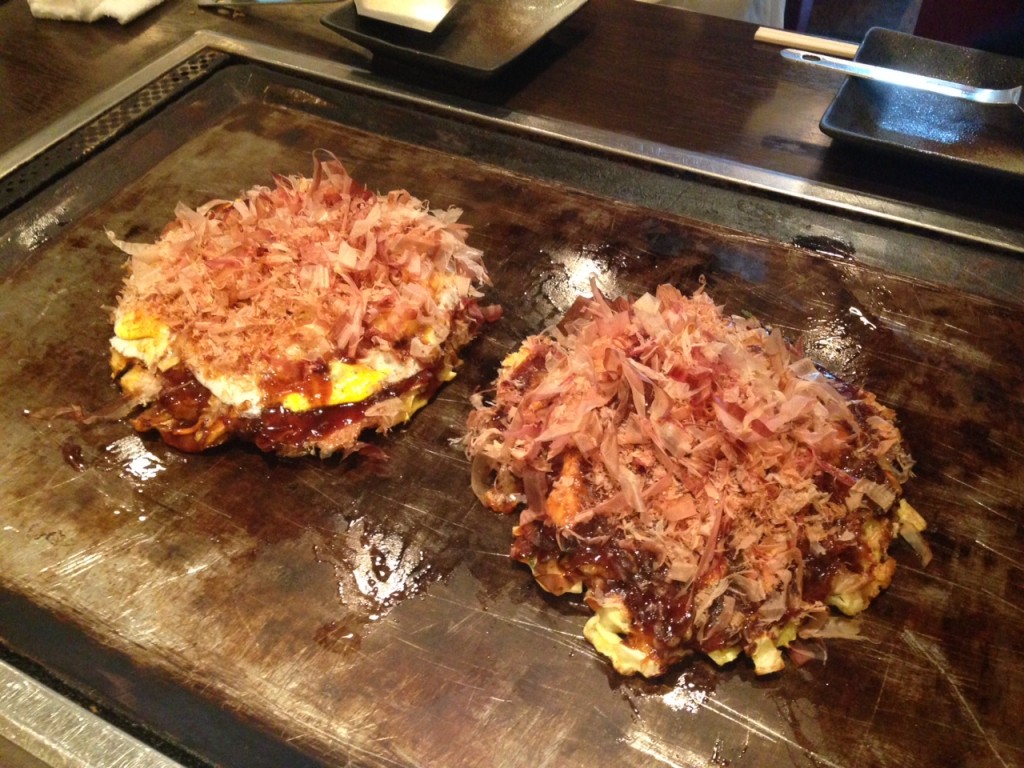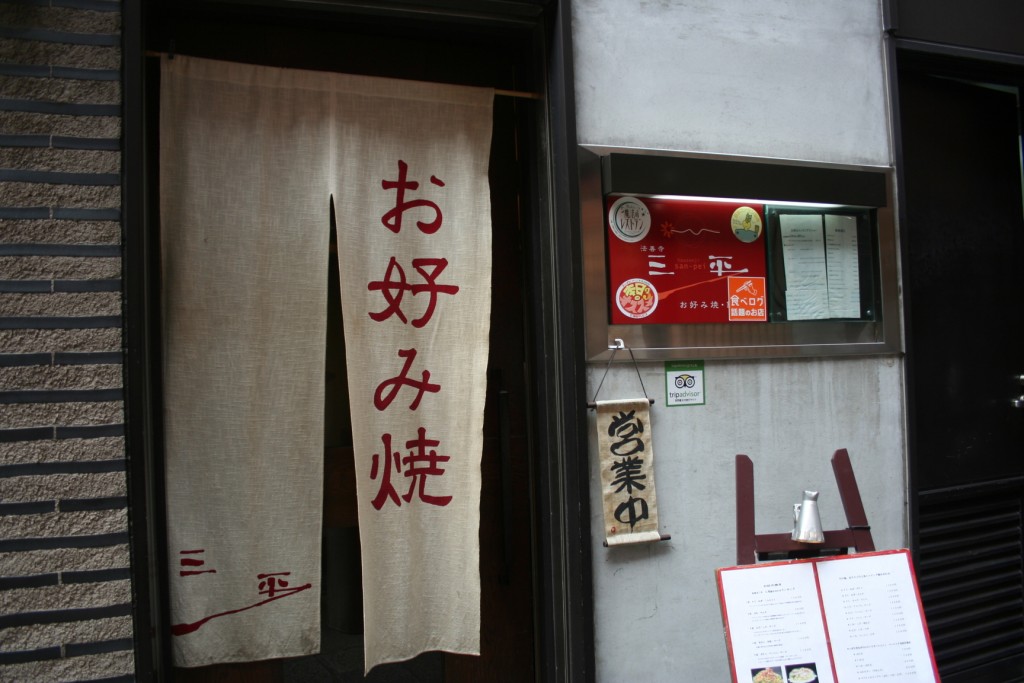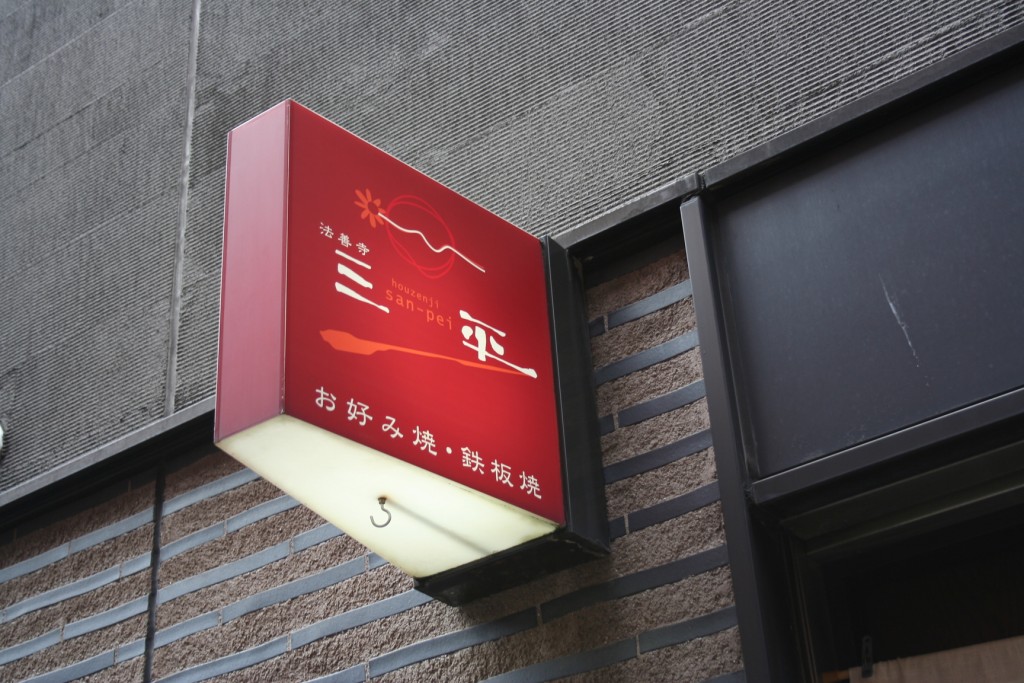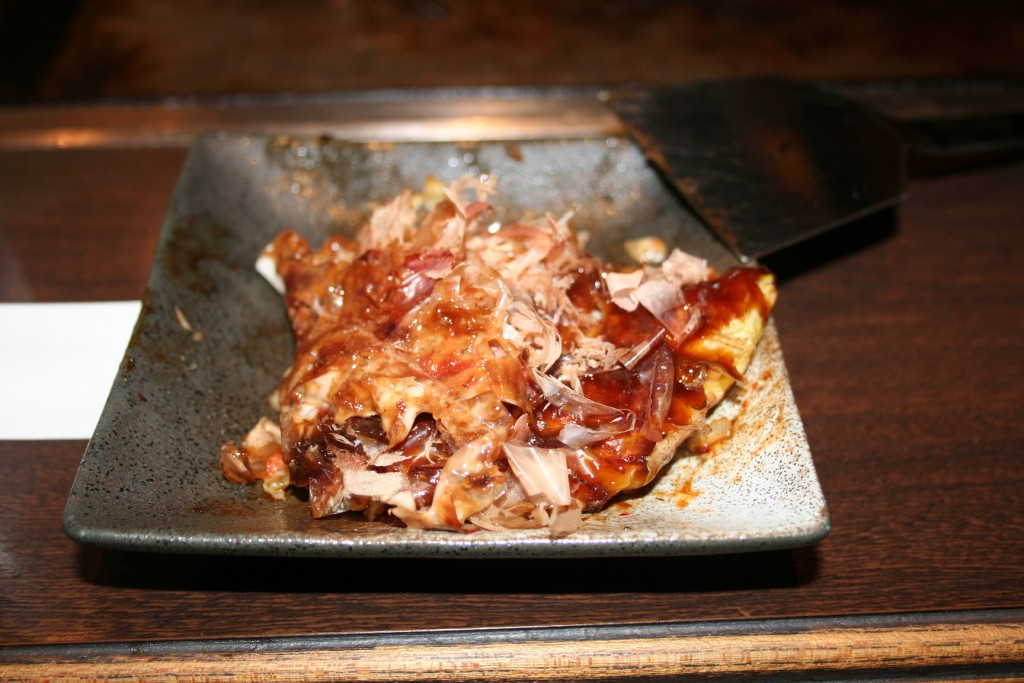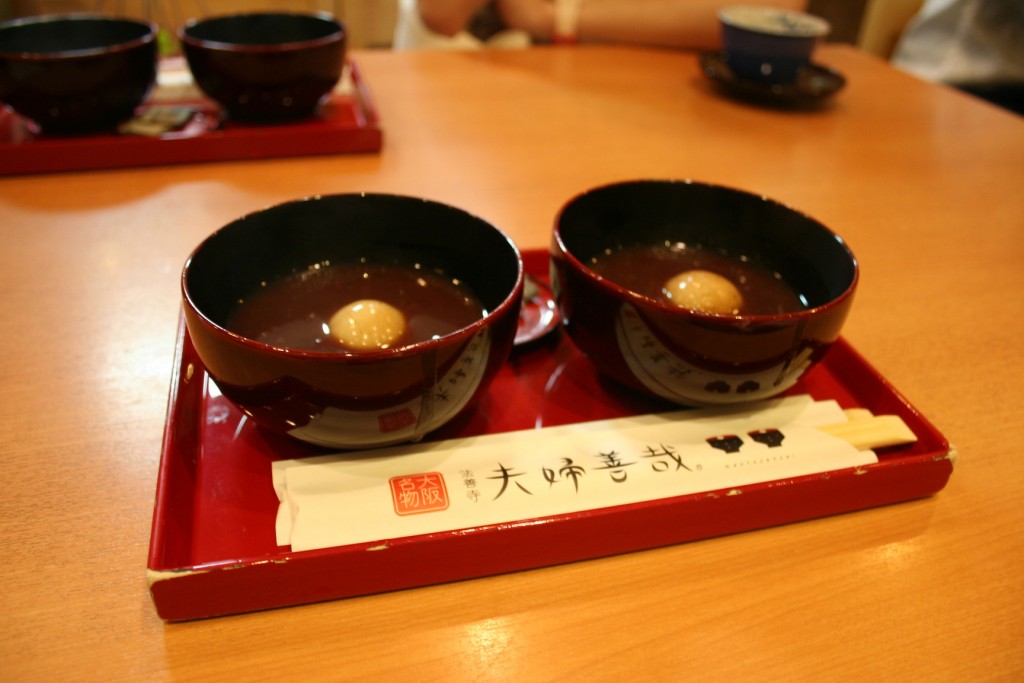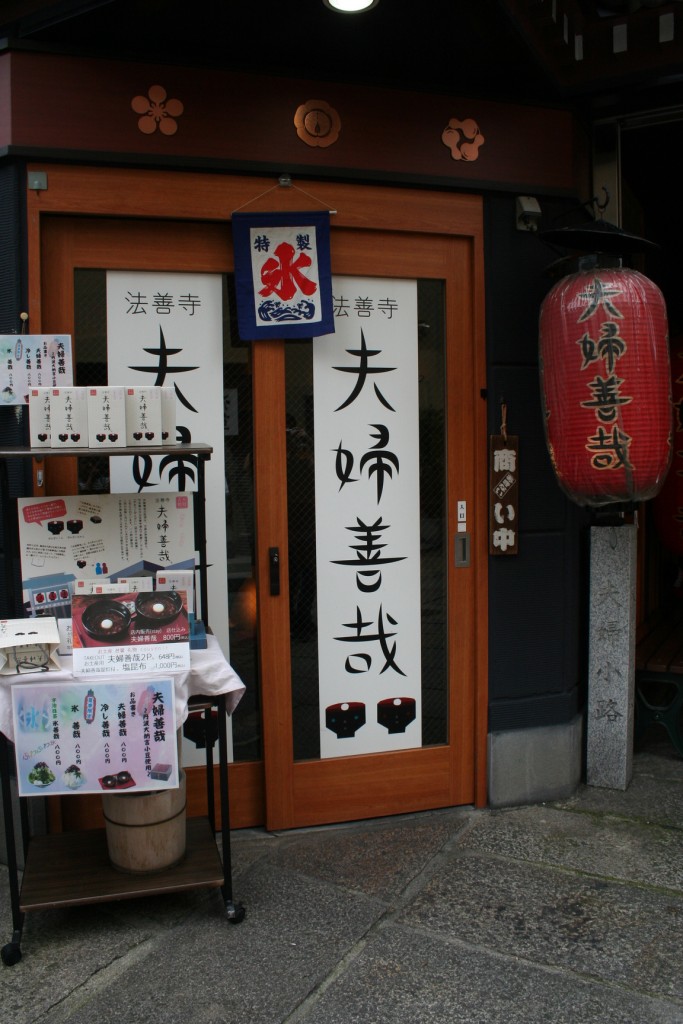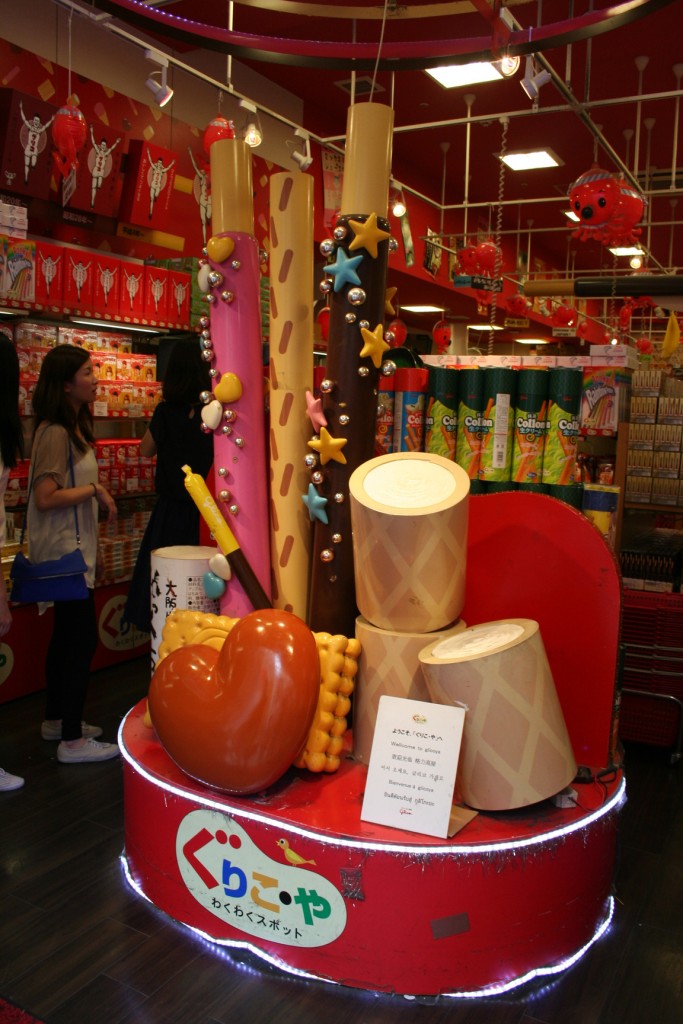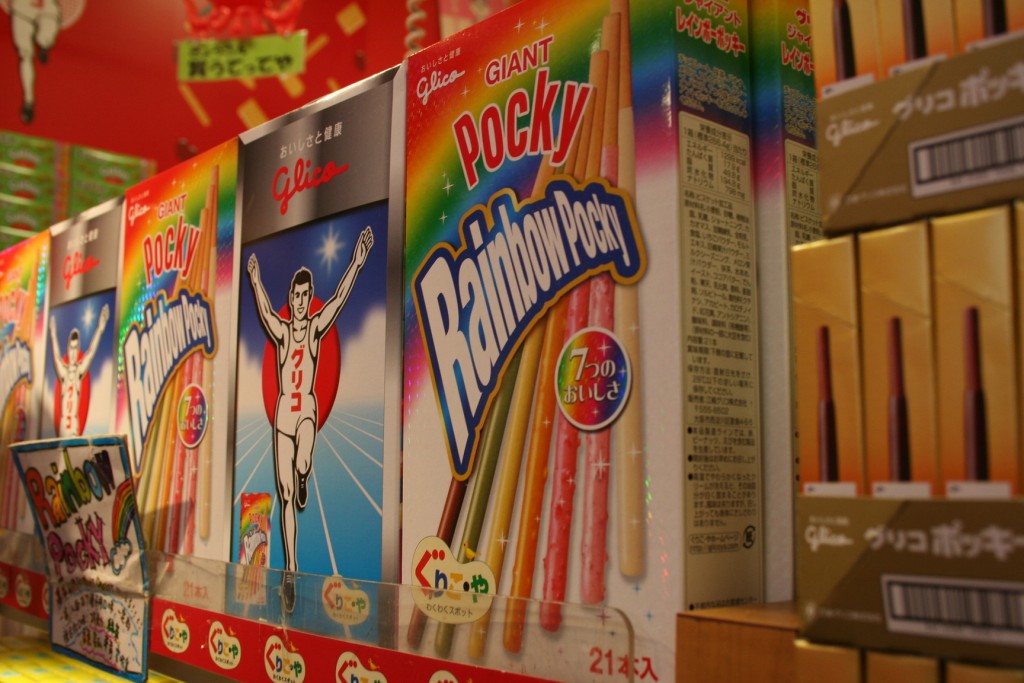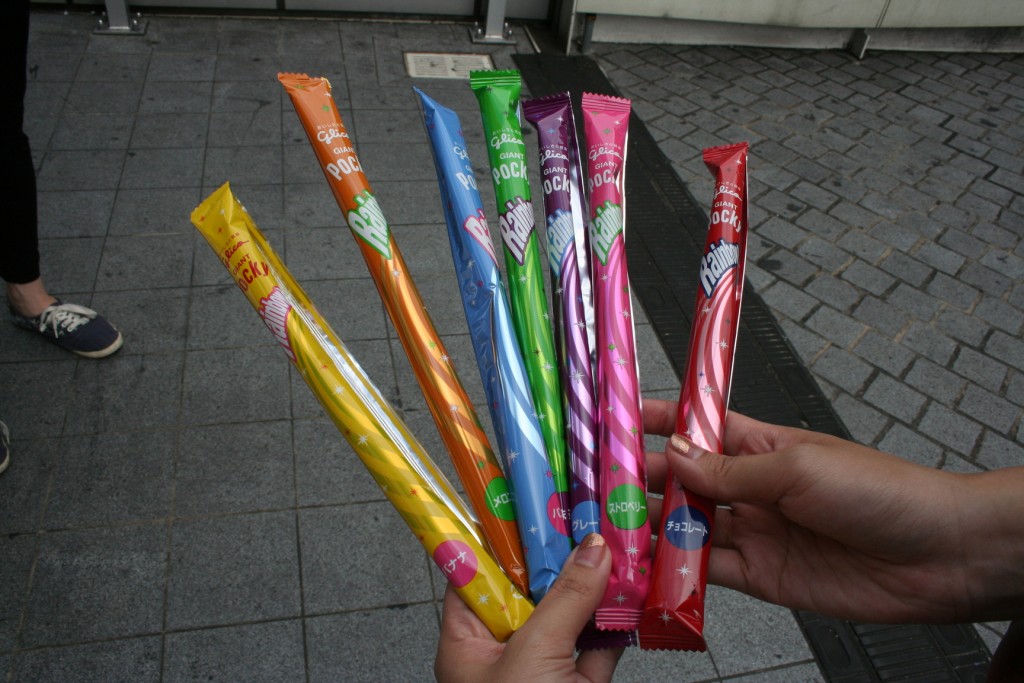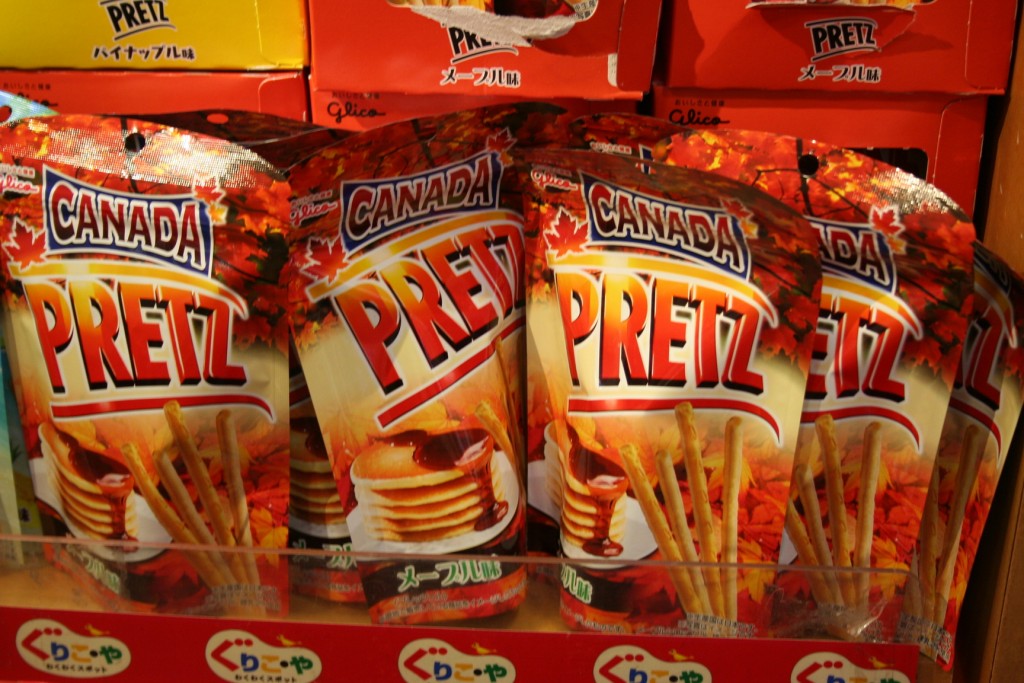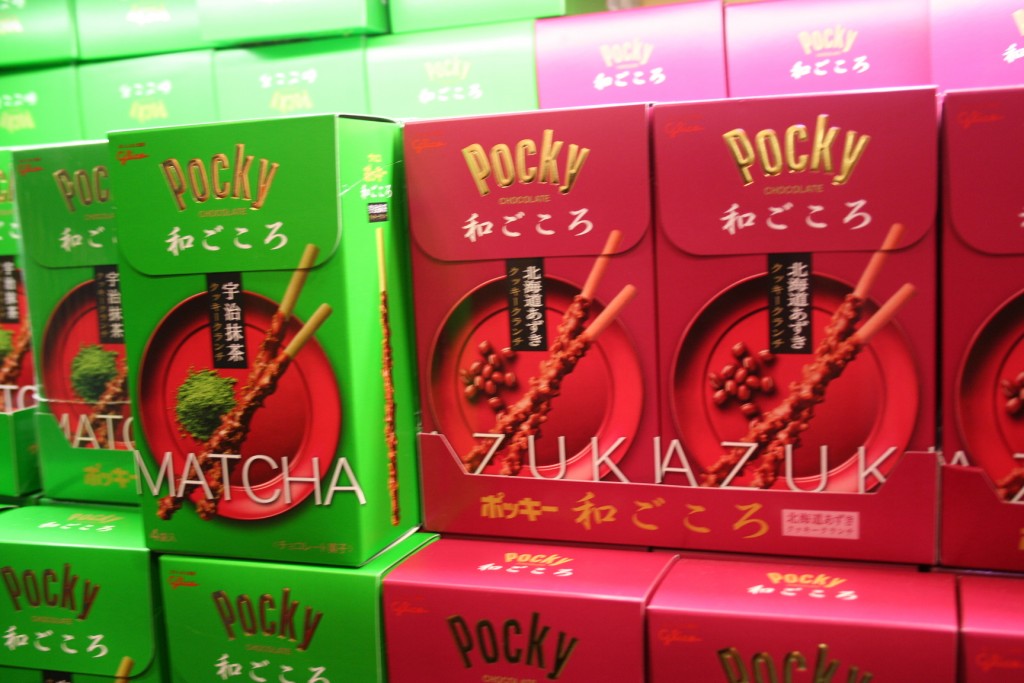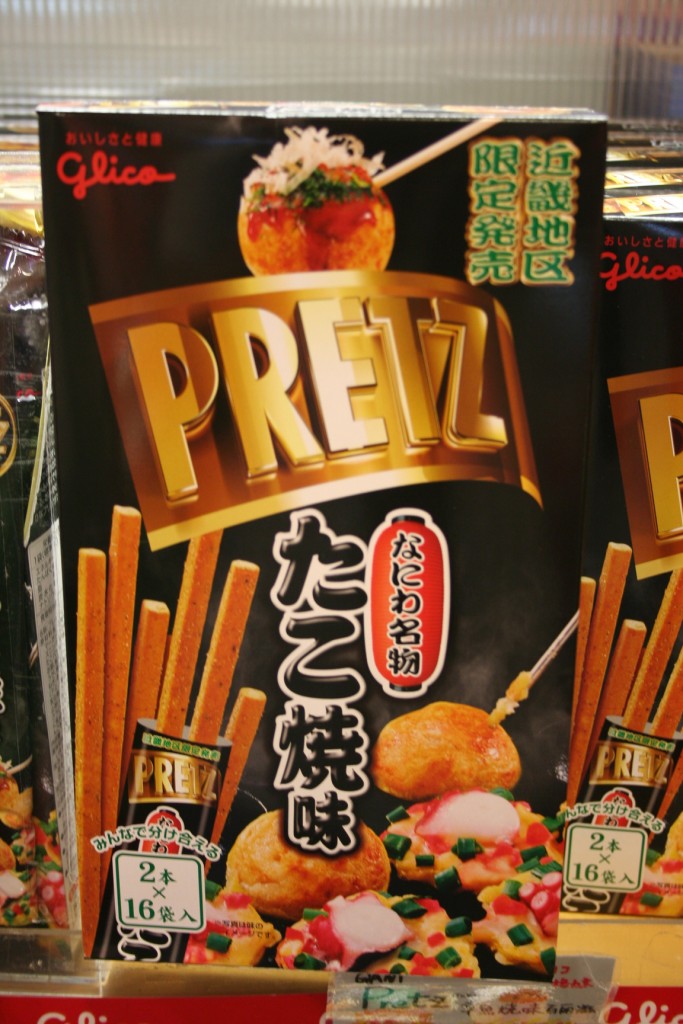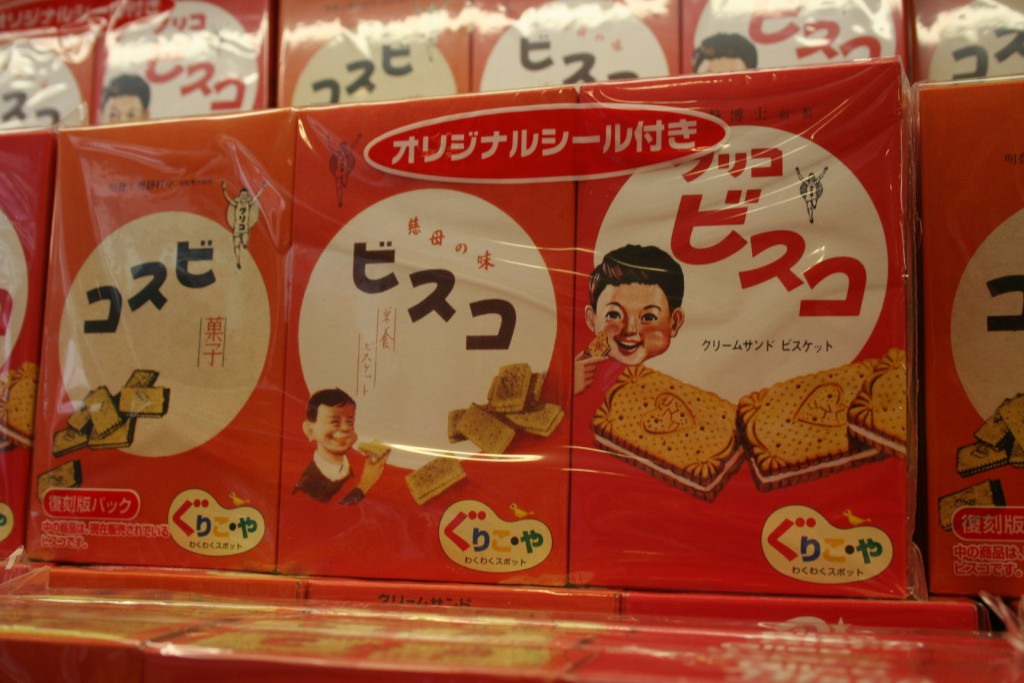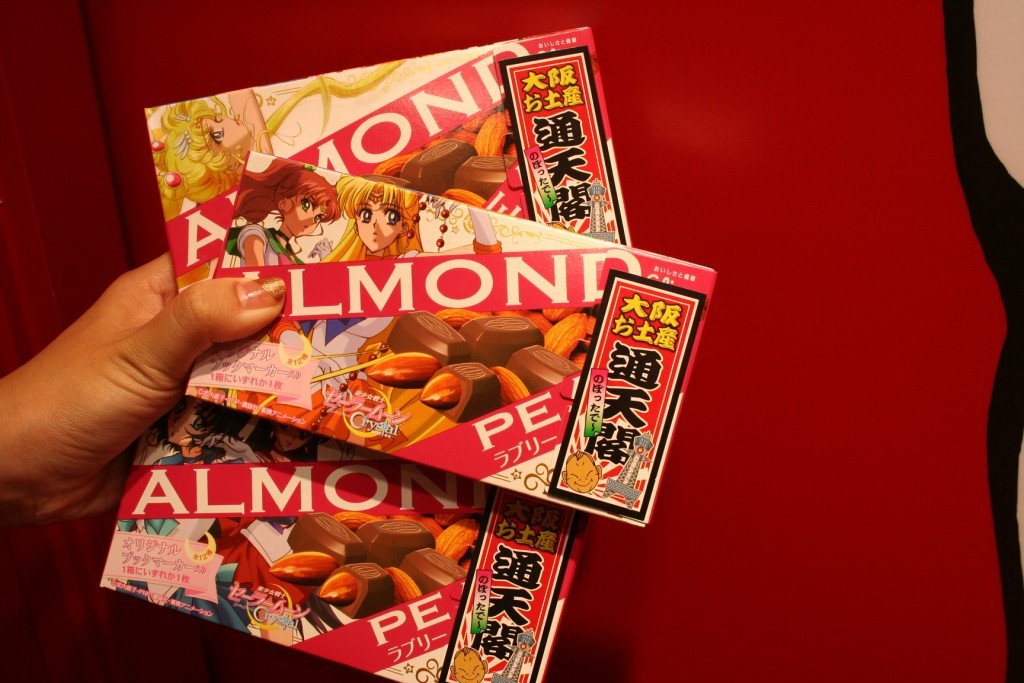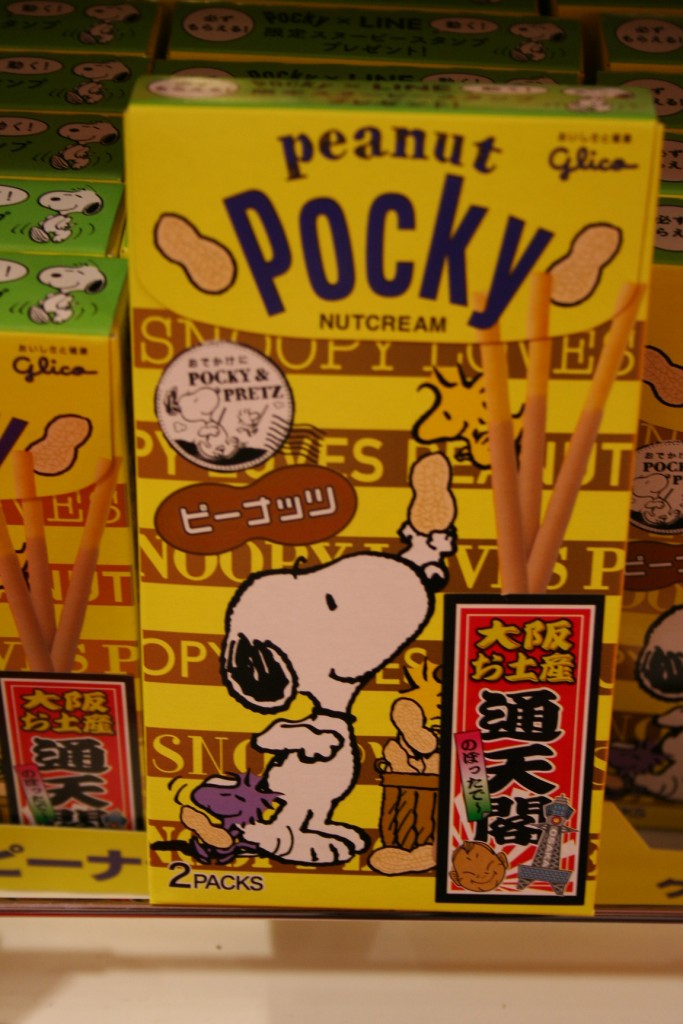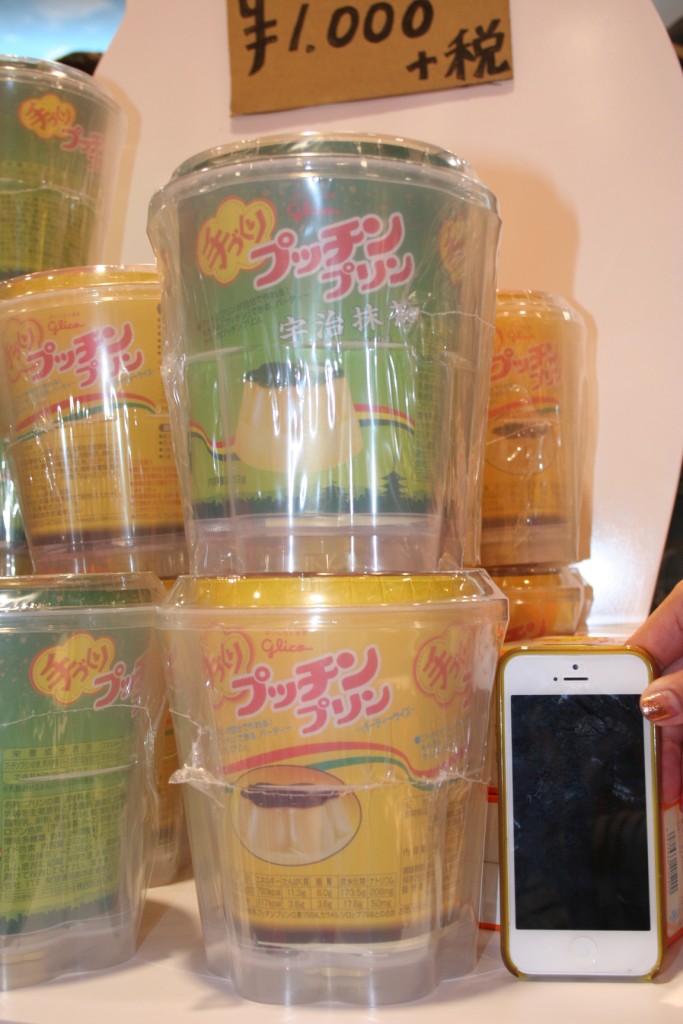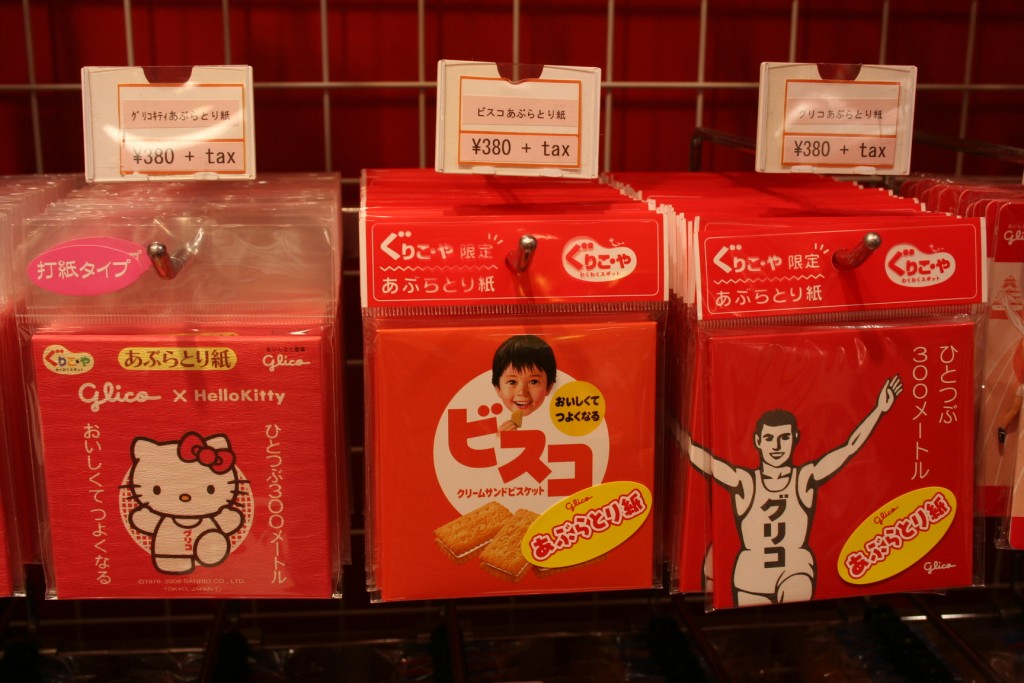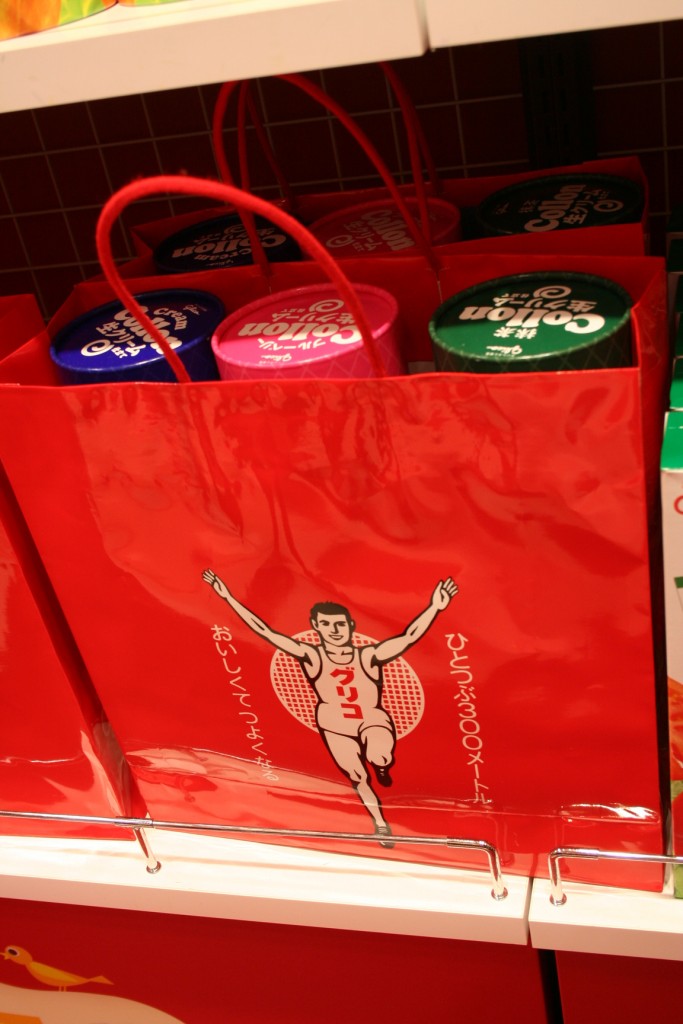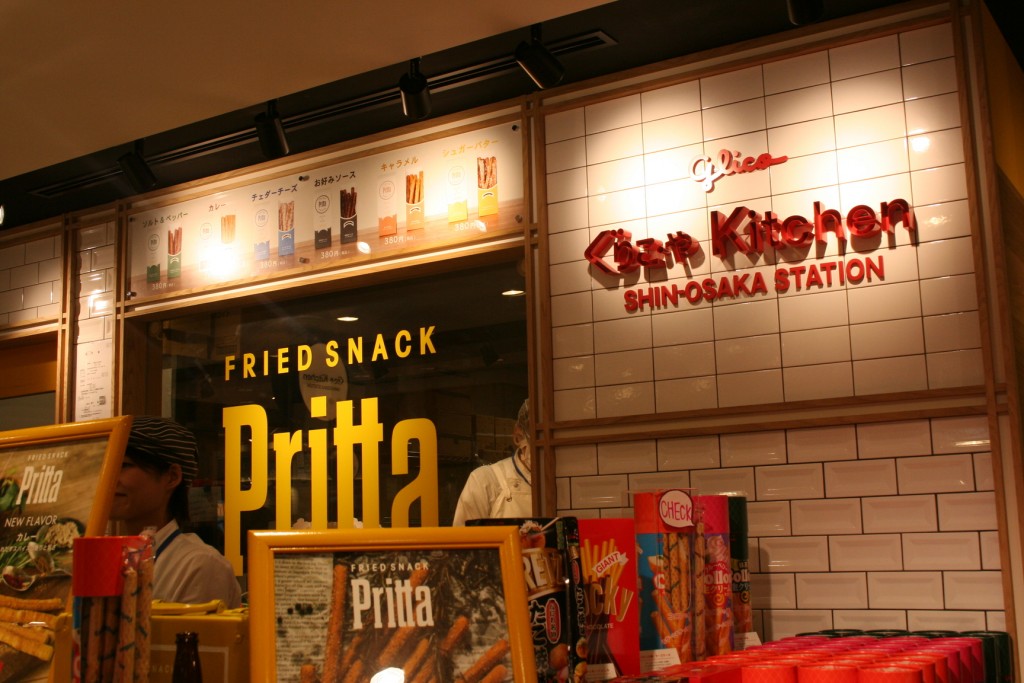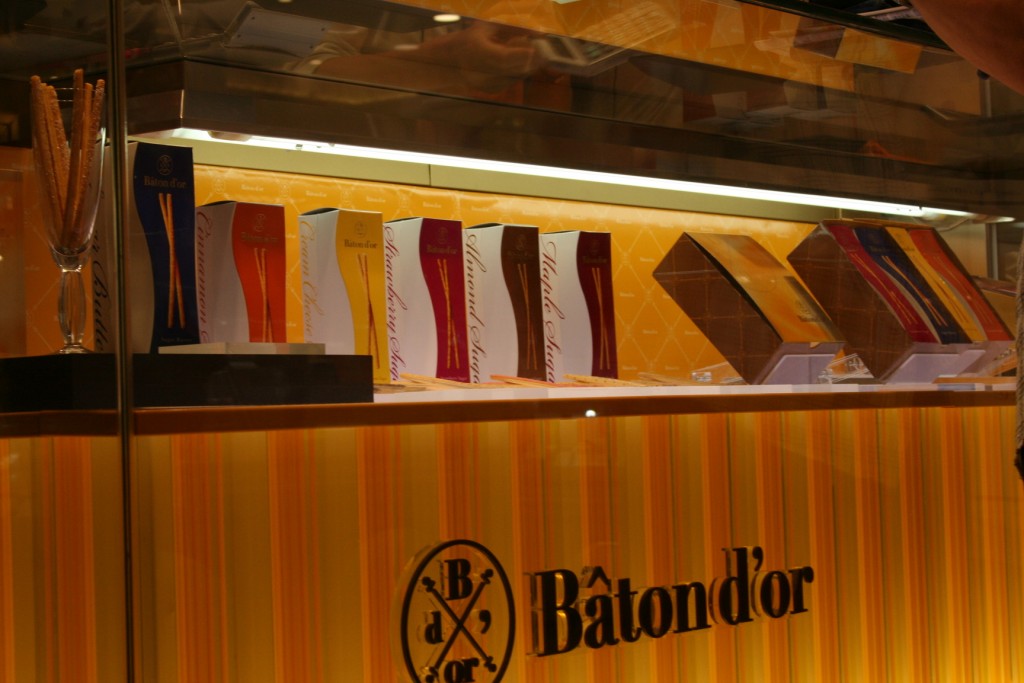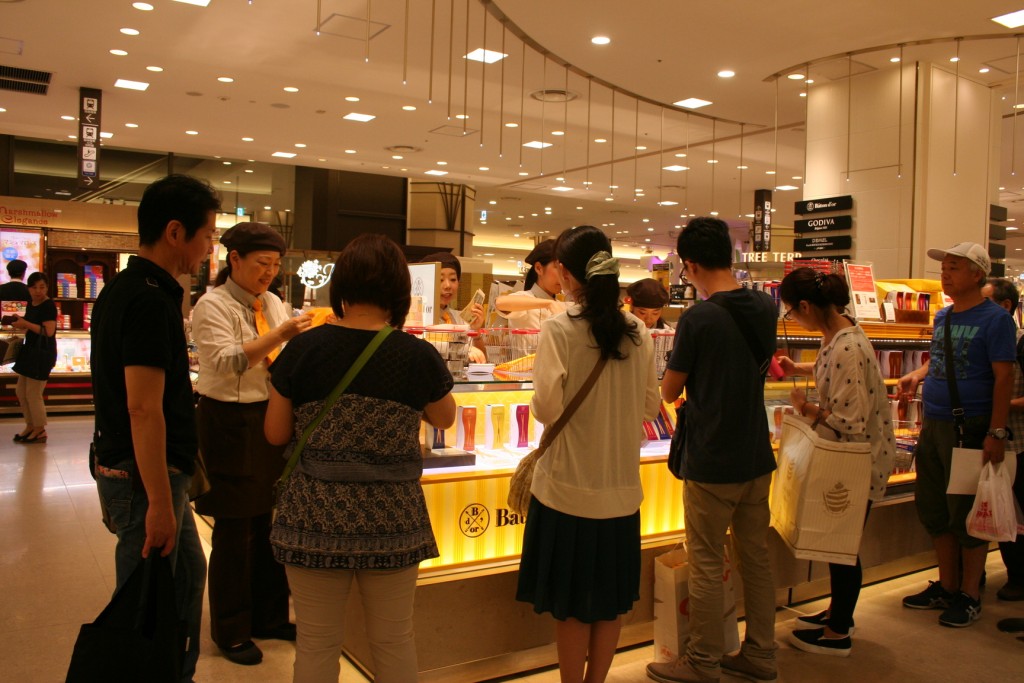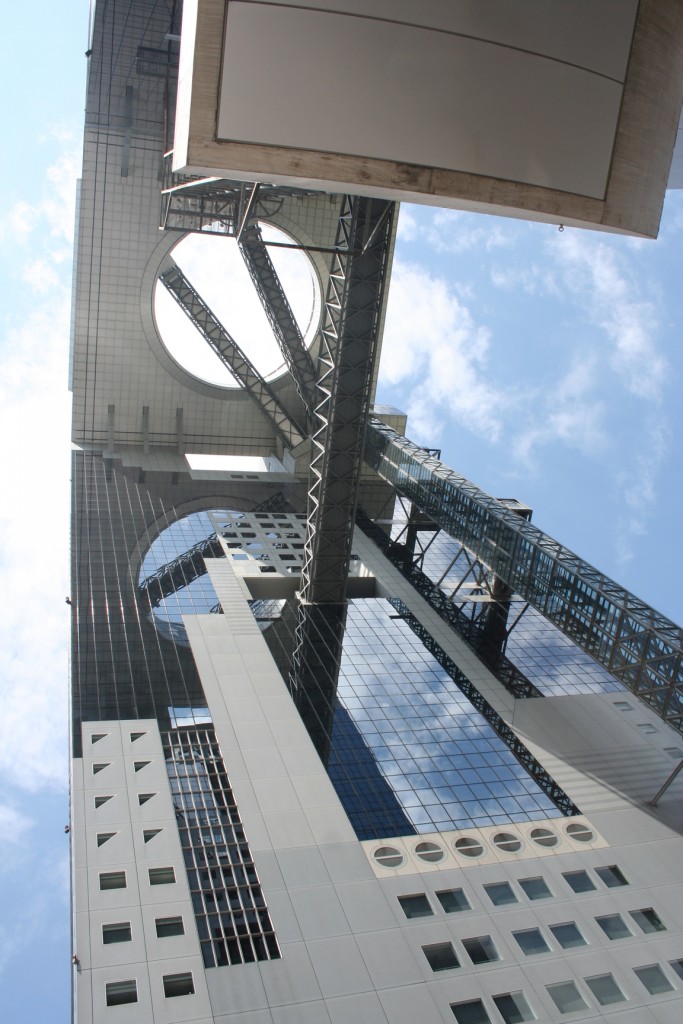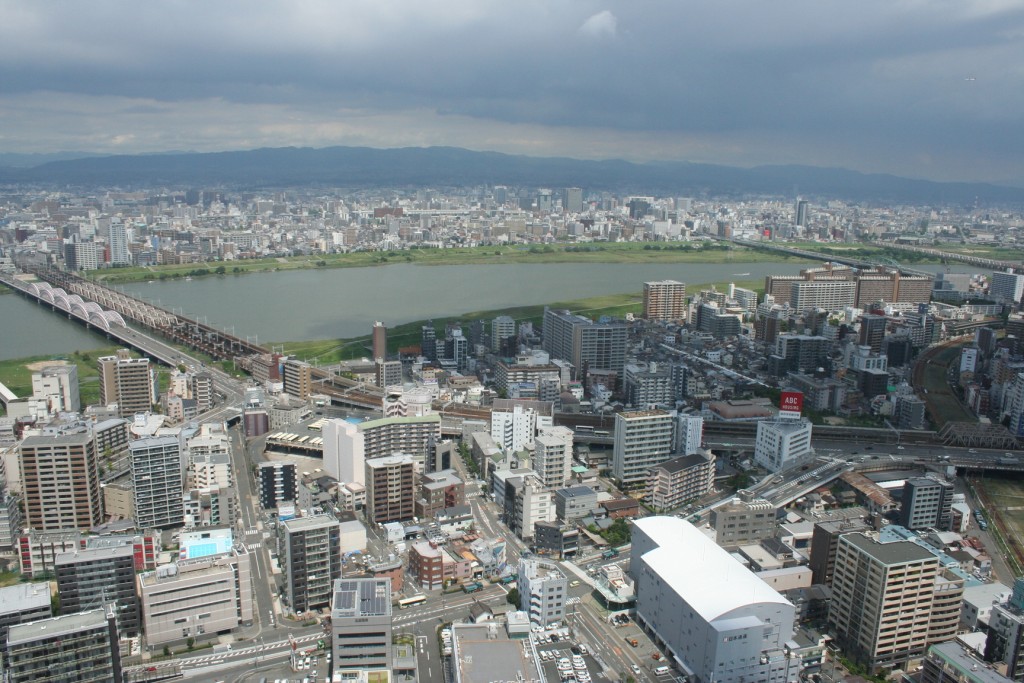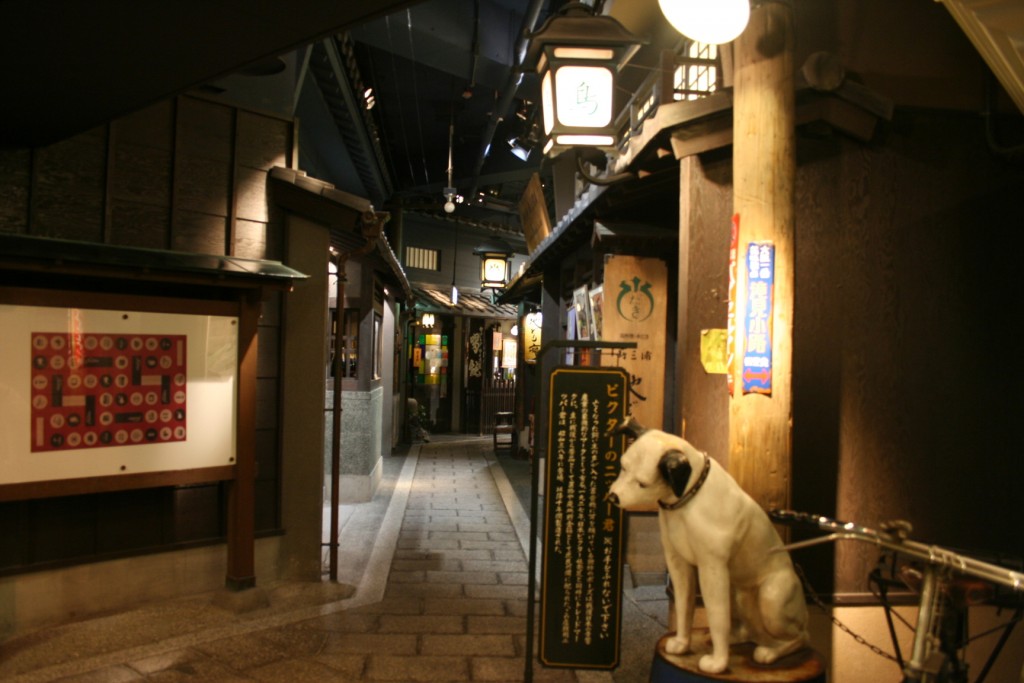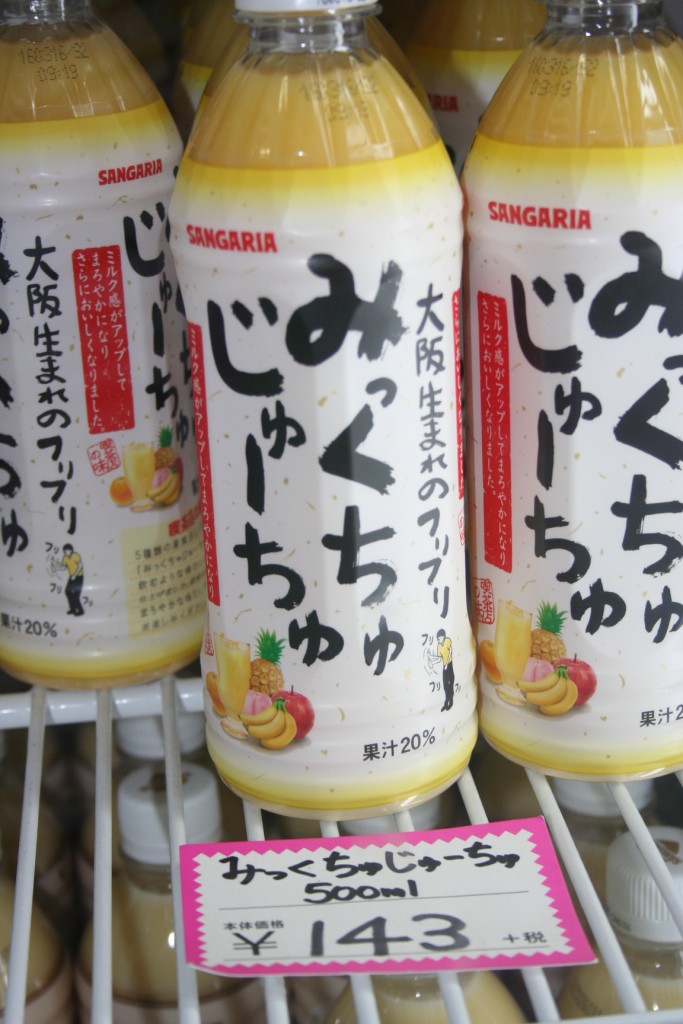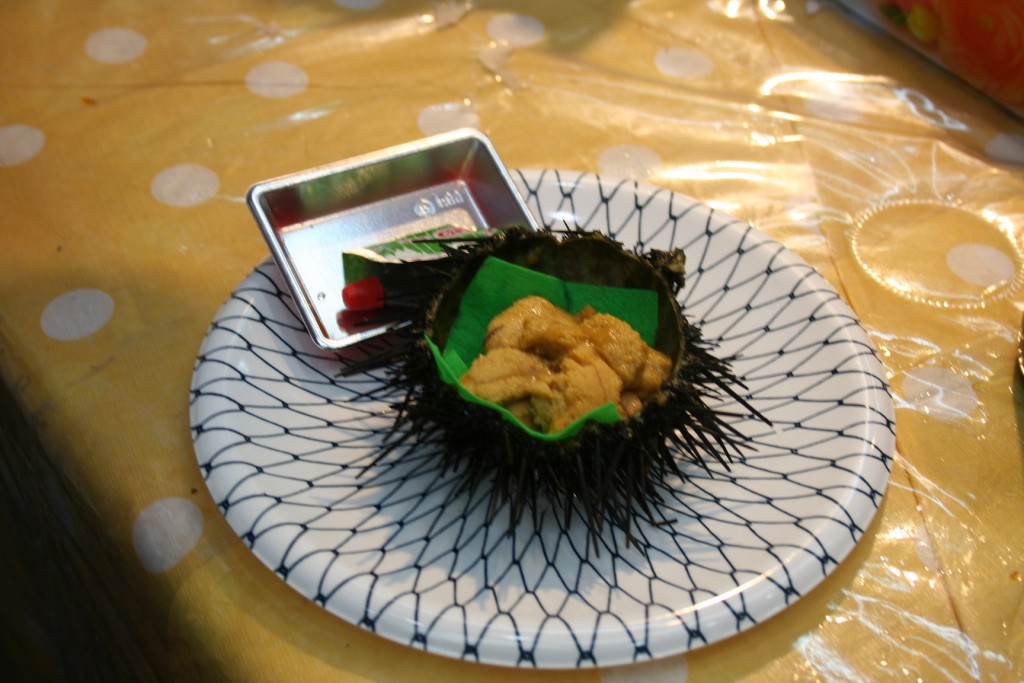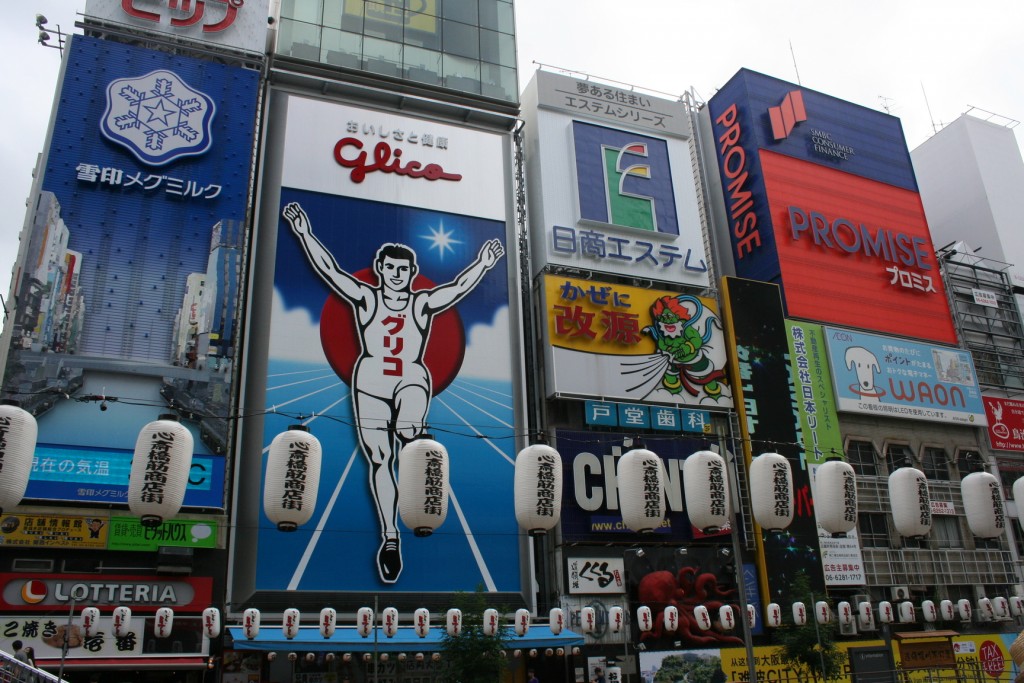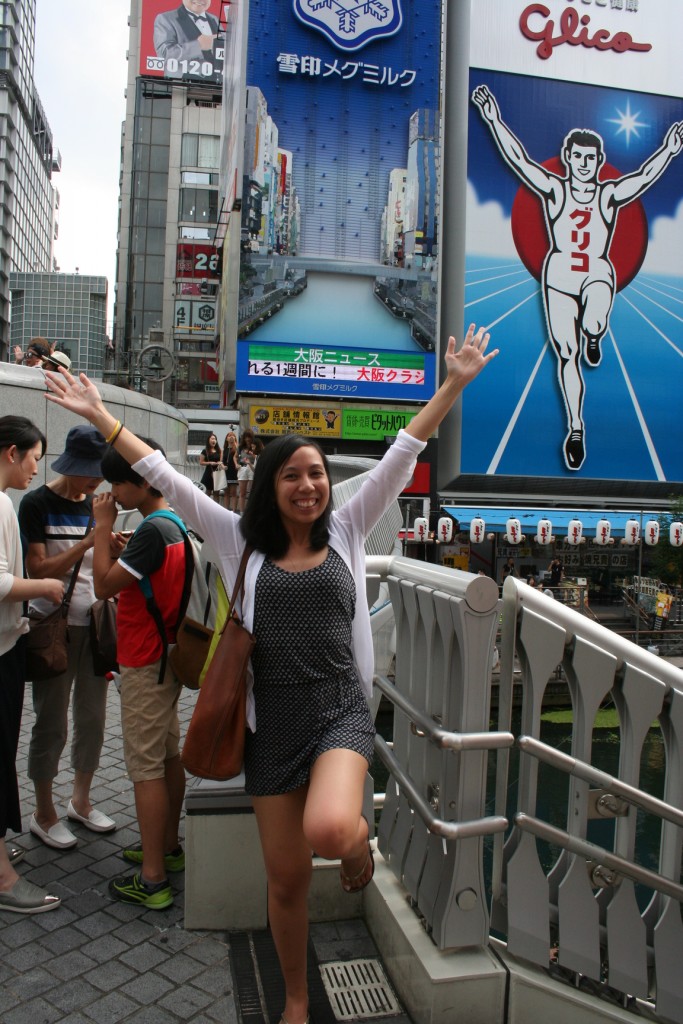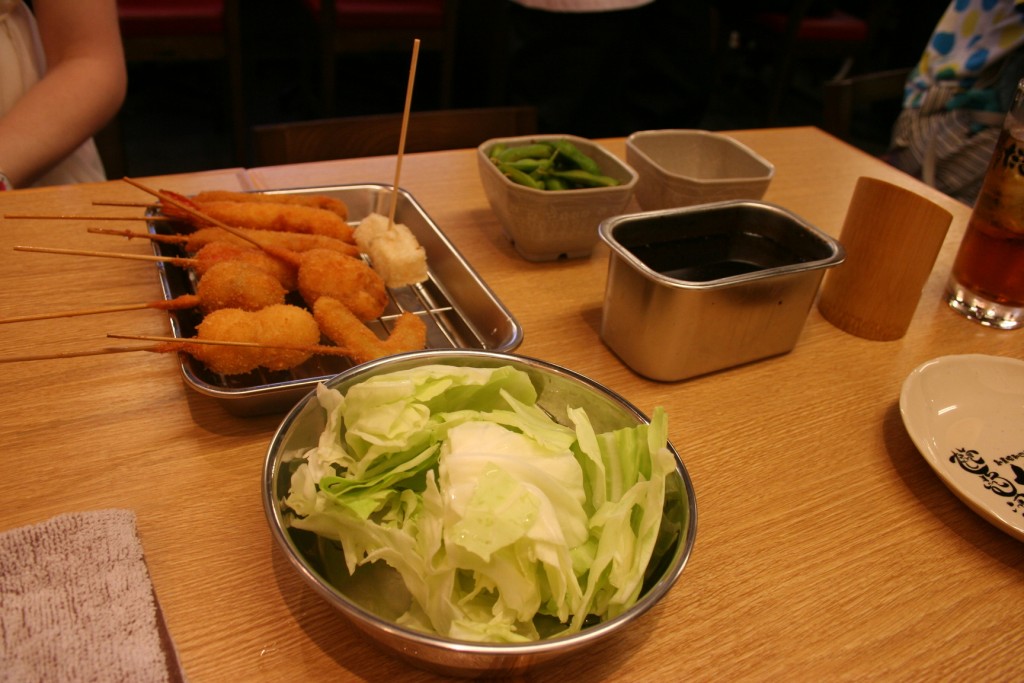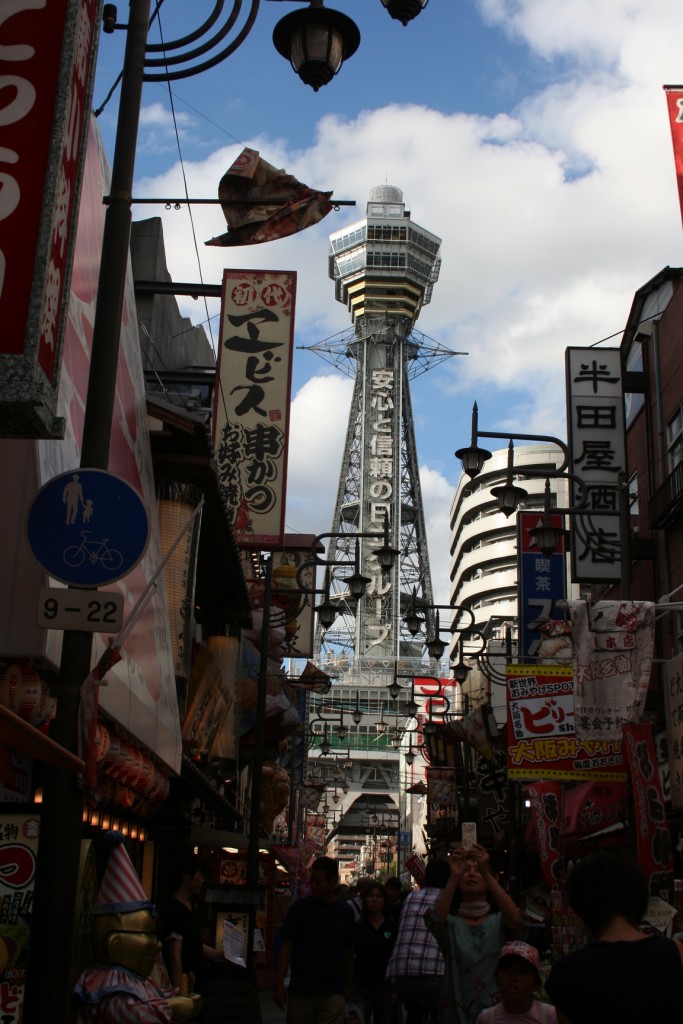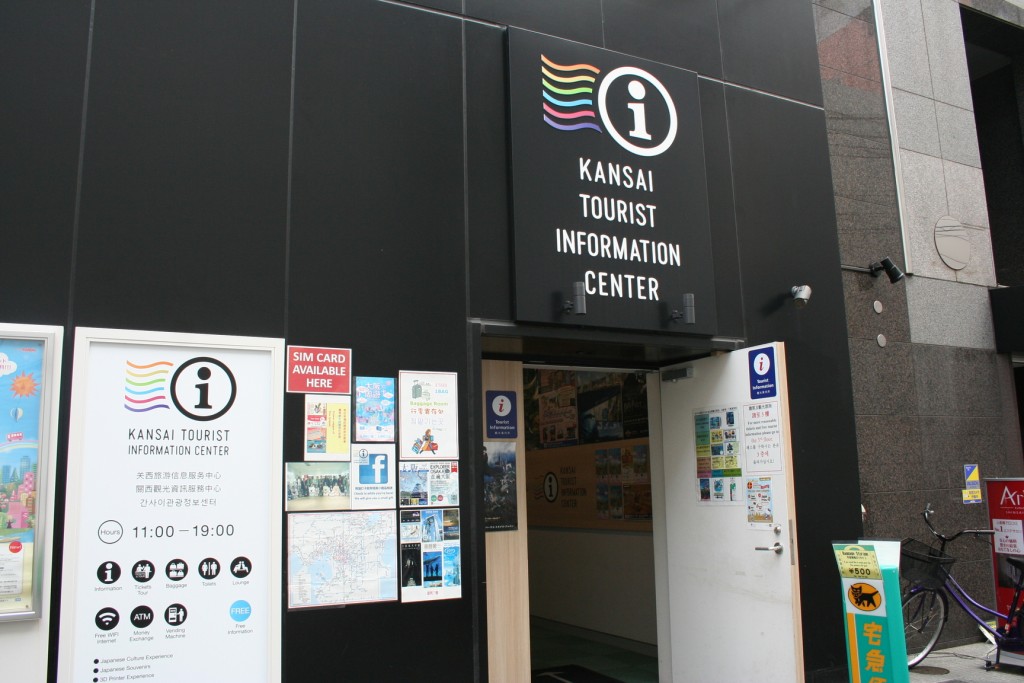
An Eating-and-Walking Guide to Osaka: 5 Things You Shouldn't Miss
Glico, the world-famous Japanese confectionary company, took us on an eating-and-walking tour of Osaka to show us the best places to eat, where to buy souvenirs around the city and the best attractions. If you want to know where to go in Osaka, check out this article and come walk with us!
This post may contain affiliate links. If you buy through them, we may earn a commission at no additional cost to you.
Have you ever heard of the Japanese company named Glico? If you haven't, then you've still most definitely heard of the products they're famous for making: Pocky, Pretz and Bisco. Glico is one of the oldest confectionary companies in Japan, and they're well-known not only in the country, but throughout the world as well. They were founded in Osaka and are still headquartered there today.
A month ago, Glico offered two of tsunagu Japan's employees a trip to Osaka to get to know the city from an insider's perspective. I was one of these employees, and who am I to say no to travel - especially travel to Osaka? So we went, armed with empty stomachs, a camera and much ambition. What follows is a recap of our tour - which consisted of mostly eating and walking - and how you, too, can make the most out of your trip to Osaka!
1. Okonomiyaki
The word "okonomiyaki" literally translates to "whatever you like, grilled." While it sounds like this means you can literally throw anything you want onto a teppan, or flat iron plate, and simply let it cook, this isn't exactly true. Okonomiyaki consists of a few staple ingredients: a batter made of flour, mountain yam, dashi and water, eggs and cabbage. After that, you can throw in whatever you want, though the extra ingredients usually consist of combinations of the following: green onions, pork belly, squid, kimchi, octopus, shrimp, mochi, konnyaku and other vegetables.
Keep in mind that okonomiyaki refers to the Kansai version of okonomiyaki. Kansai is the region that includes Osaka, Hyogo (where Kobe is), Mie, Nara, Wakayama, Kyoto and Shiga. When people talk about okonomiyaki, they typically mean Kansai-style. The other version that most people know is called Hiroshima-yaki. Instead of mixing the ingredients into the batter, they are layered on top of each other. Noodles and fried eggs are also the norm with this kind of okonomiyaki.
Regardless of what's inside, the okonomiyaki is always pancake-shaped. It is also usually topped with okonomiyaki sauce, mayonnaise, katsuobushi flakes and sometimes aonori (green seaweed flakes).
For our first meal in Osaka, Glico took us to an okonomiyaki restaurant called Houzenji Sanpei, or simply Sanpei, for lunch. It's one of those out-of-the-way places tucked somewhere among a few slim alleys behind a temple - definitely off the main road. (It's still easily accessible, though, so don't let that deter you.) It's also one of those tucked-away places that everyone knows, and for good reason. We had a reservation, so we didn't have to wait, but there were a few people already waiting by the time we arrived for an early lunch.
(For Sanpei's address and contact information, please see the end of this article, where there is a listing for every shop mentioned in this article.)
I'll confess that before that moment, I wasn't a huge fan of okonomiyaki. I'd always had it at do-it-yourself places, or at home parties, which is the norm - usually most restaurants and households have teppan plates for you to make your own okonomiyaki. (It is "whatever you like, grilled," after all.) Most of the okonomiyaki I've eaten has also been of the Hiroshima-yaki variety. Because of this, I've always had a rather heavy image of okonomiyaki - lots of ingredients, very thick, will leave you absolutely stuffed.
But the Kansai okonomiyaki we had at Sanpei was AMAZING.
Don't believe the photo - it may look like a heap of nothing, but it was so good. It was soft, fluffy and airy - nothing like I'd ever had before. The amount of ingredients was just right and the entire pancake was grilled to perfection. This is probably because we weren't able to make it ourselves - there were chefs who grilled the okonomiyaki prior to serving us - but that was fine with me. If you're looking for superb okonomiyaki and don't mind not having the experience of making it yourself, I can't recommend this place enough.
We ended up ordering four different flavors, among them pork and kimchi and one with shiso (Japanese basil). All of them were super delicious, and have made me realize that I haven't been eating the right okonomiyaki for my entire life up until that moment.
Okonomiyaki are so famous in the Kansai region that you can find okonomiyaki-flavored snacks in just about every souvenir shop. You can even find okonomiyaki plushies, phone charms, socks and t-shirts!
YOU SHOULD ALSO VISIT: Shinsaibashi & Amemura
Sanpei is located in the Namba area, which is on the Midosuji subway line. It's one stop away from Shinsaibashi, which is the major shopping hub of Osaka city. From Shinsaibashi, you can easily get to Amemura, or Amerika-Mura, which is supposedly an American-themed shopping area that is considered to be a trendier, more youth-centric and intensely fashionable area of the city. (The only thing American about it that's visible is the replica of the Statue of Liberty that can be seen from below.)
Shinsaibashi is a long covered shopping street where big brand-name stores like Dior, Chanel and Gucci stand alongside local Japanese brands, restaurants, fast-food chains and fast-fashion stores like H&M. It's a good place to spend a rainy day, or, if you really want to shop, then the best place to do your shopping in Osaka.
You can also head over after lunch - like we did - to walk through both areas and hopefully shed at least half of the calories from the okonomiyaki.
2. Sweets
On our way out of the okonomiyaki place, our tour guide, Bettina, told us she wanted to stop at one of her favorite shops in the area. It ended up being right next to the temple, Hozen-ji, and was a quiet little place selling zenzai and, because it was summer, matcha kakigoori (green tea shaved ice).
Zenzai is a traditional Japanese dessert that is a soup of sweetened red beans (azuki) and fresh mochi balls. It is a type of oshiruko, or red bean soup, but it is made of paste, so it is not very watery and is more creamy.
The shop was called Meotozenzai and is a good place to get dessert after an okonomiyaki meal. You can get cold or hot zenzai, and the set comes with two bowls. I would recommend stopping by to let your food rest and just take a breather before you continue on your walking journey throughout Osaka.
Because Glico was giving us the tour, we also stopped at a few places around the city that sold Glico products. Several of the stores were Glico-ya, or Glico-only souvenir shops that sold not only your regular, run-of-the-mill Pocky and Pretz items, but also limited edition flavors and special snacks like giant Pocky sticks, Osaka Koibito cookies (which come in different packages and flavors based on the tourist attractions in Osaka, like Tsutenkaku) and several matcha-flavored snacks. You can also find the original packages for many Glico products.
Here are some of the goodies we found at souvenir shops around town, including the Little Osaka Omiyage Market in Dotonbori and the souvenir section in Tsutenkaku:
This is the display that greets you upon entering the Little Osaka Omiyage Market, just in case you didn't know that Glico is a big thing around these parts.
These are boxes of giant rainbow-colored Pocky that come in flavors like grape, mango, banana, strawberry, matcha and chocolate. Honestly, I liked them better than regular Pocky, and just a few will fill you up!
The colors of the rainbow.....on pretzels.
These were "Canada-flavored" Pretz, which meant that they tasted like maple syrup - though we were impressed to see that the maple syrup used in the product was actually from Canada. There were also Hawaii Pretz and Thai Pretz.
These are some of the more popular Pocky flavors for tourists: matcha and azuki (green tea and red bean). They really do make great souvenirs.
Takoyaki-flavored Pretz! I didn't try it, so I'm not actually sure if it tastes like takoyaki. I'll leave that up to you.
These are the original packagings for Glico's Bisco biscuits. They also come with original stickers.
If you're a fan of Sailor Moon (and come on, who isn't), then you can find almond chocolate candies with original Sailor Moon packaging. They also come with a random Sailor Moon bookmark.
There is also Peanuts-themed packaging!
A MASSIVE pudding for the pudding lover in your life. iPhone 5 for scale.
I thought these were very original, and something I'd actually love to have as a souvenir: oil-blotting sheets in original Glico packaging. The Hello Kitty x Glico one is adorable.
Here's a bag with 3 giant rolls of Collon, a cream-filled pretzel snack, that you can buy as-is and take home as souvenirs. Pretty handy!
Bettina also brought us to two outposts for Glico snacks that are a little more high-class: Pritta and Baton d'or. Basically, Pritta are fancy versions of Pretz and Baton d'or are fancy versions of Pocky.
If you think you're good with just your regular Pretz and Pocky, I would urge you to at least try their high-class versions: they are very, very good. I was especially surprised by how delicious the Pritta were. They come in both sweet and savory flavors, like butter and sugar and curry. I had the butter and sugar, and only one pack - I honestly wish I'd gone back to get more!
The Pritta can be bought in the Glico-ya Kitchen store, which is located in the Eki Marche section of Shin-Osaka station. The Shinkansen in Osaka arrives at Shin-Osaka, and the Eki Marche is right near the area where you arrive, so you can grab your snacks right away if you want!
The Baton d'or, however, is harder to get because of its popularity. The Baton d'or outpost we went to was located in the Hankyuu department store in Umeda Station (also near JR Osaka Station). You'll most likely have to stand in line - and not just your standard "waiting to order" line. It could be anywhere from fifteen minutes to over an hour, depending on the day and what time you arrive. When we got there around 11 a.m. on a weekday, the wait was 25 minutes.
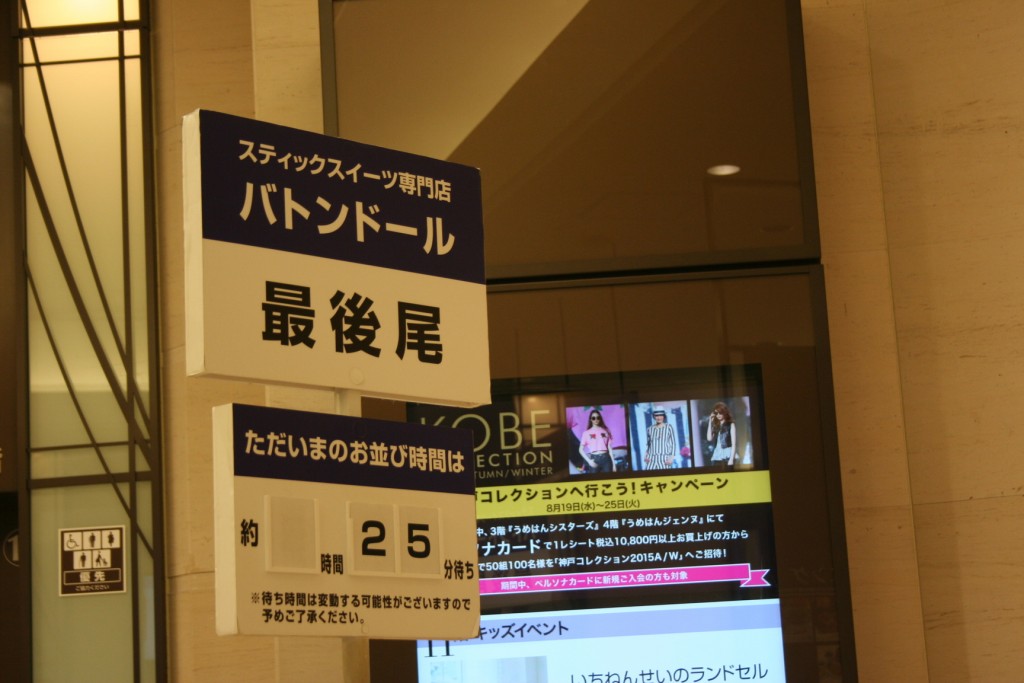
Luckily, Baton d'or has two other stores: one in the Takashimaya Osaka store by Namba station, and another in the Takashimaya in Kyoto. More details can be found here.
YOU SHOULD ALSO VISIT: Umeda Sky Building
The Umeda Sky Building is located in the same neighborhood as the Baton d'or outpost, though you'll have to walk a bit (but not too far). It's one of the tallest buildings in Osaka and consists of two interconnected towers - the original plan was four, but it was reduced during the construction stages.
The Umeda Sky Building is one of many good places to check out the Kansai skyline from high above. There are many other places to do this - Abenoharukas, for example, which is Japan's tallest building, or Tsutenkaku - but Umeda Sky Building has a "Floating Garden Observatory" at the top, where you can purchase souvenirs, visit a small shrine meant to grant your love wishes, or buy a love lock that has your and your partner's name engraved on it. There's even a place in the outdoor viewing area where you can attach the lock as a sky-high symbol of your love, and then take a photo inside of the heart shape.
In the basement of the building is an area with shops and restaurants that has been designed to look like Osaka in the early 20th century, from the architecture to the signage. It has a great, old-timey atmosphere that may seem a little kitschy, but is actually an interesting experience, especially if you love Japanese history.
3. Mixed juice
If you mentioned "mixed juice" to anyone who isn't from Osaka, they might assume that you mean a fruit juice that consists of a blend of different fruits. This is most definitely what we thought when Bettina asked us if we'd ever heard of it before.
"It's....mixed juice," we said, like she'd asked us if blue is the color of the sky. "Like juices mixed together."
But having lived in Osaka for two years, Bettina knew better.
"It's not like that in Osaka," she said. "In Osaka, we put milk in it."
We stared at her.
"What?" one of us finally said. "Milk?"
"Milk," she echoed. "With fruit juice."
This is not really new, especially in Japan - milk-and-fruit juices can be found everywhere in vending machines or cafes. In Osaka, when someone says "mixed juice," it refers to an Osaka specialty drink that is milk-based and then blended with orange and banana juices. Other fruits, like peaches, can also be added as a "bonus."
While walking around the city, we came across multiple stands and souvenir shops selling Osaka's special blend of mixed juice. The canned/bottled versions often sold in souvenir shops have the phrase "mikkuchu juuchu" (みっくちゅじゅーちゅ) written on them, which is the way you would say "mixed juice" if you were about three years old.
We aren't big fans of milk, so we decided to leave this adventure for another time. But if you're intrigued, why not try it? It might taste like your new favorite dessert! (Or just a milkshake.)
YOU SHOULD ALSO VISIT: Kuromon Ichiba
The Kuromon Ichiba is sort of like Osaka's answer to Tsukiji market in Tokyo, but encompasses a bigger space and is more accessible, as there's no fish betting or off-limits areas. The market is located close to Nipponbashi Station on the Sakaisuji line or the Sennichimae line of the Osaka subway or the Kintetsu Namba line.
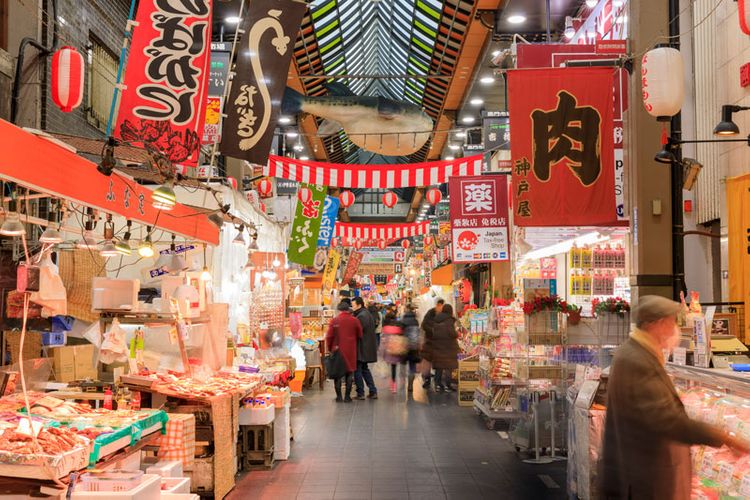
PIXTA
Basically: come here if you're hungry and you want some very fresh food. Because the Kuromon Ichiba is a market (and an old one, at that - it's 190 years old), it's packed with open stores selling vegetables, fish and meat. But because the market is available to walk through, many of the shops have started eat-in services that allow customers and tourists to try the food they have for sale. Most of these are only open for lunch, so I'd recommend going around that time, but even if you pop by a little later you're still bound to get something.
During our stroll through the market, I bought some uni (sea urchin) and ate it standing on a small table that the store had set up. It wasn't very cheap, but it was affordable, and the quality was awesome. You can get that and more - from sashimi, sushi, tempura, grilled meat, pickled vegetables, and more - just passing through.
4. Takoyaki
Takoyaki, along with okonomiyaki and kushikatsu, are the representatives of Kansai-area food. The name literally refers to grilled octopus (tako is octopus and yaki, like okonomiyaki, means something that is cooked on a teppan plate or grill) that are folded into a dashi batter with cabbage and chopped red ginger and then fried into balls. The balls are then topped with takoyaki sauce, mayonnaise, katsuobushi flakes and aonori, just like okonomiyaki.

However, you don't have to put octopus inside takoyaki - or you can put octopus plus a thousand other things. The beauty of this delicacy is that you can make your very own takoyaki with whatever ingredients you prefer. Takopa, or takoyaki parties, are popular to have at home with a do-it-yourself takoyaki machine because everyone can have something they like, and you can make it like a food bar with different ingredients. For instance, my personal favorite kinds of takoyaki are wiener sausages or shrimp. I've also made dessert takoyaki, which uses regular batter (without dashi) and chocolate filling.
Unfortunately, because we'd been eating all day, we were too full to squeeze any takoyaki into this trip. Having eaten takoyaki on previous visits to Osaka, though, I can say with my whole heart that it's really no use eating takoyaki anywhere else in Japan: Osaka's takoyaki is the best. It's gooey on the inside, crispy and just right on the outside, and the flavor is perfect without being too overpowering. You could have fast-food takoyaki in Tokyo, but it's not the same at all.
Luckily takoyaki places can be found ANYWHERE in Osaka, and even in the surrounding Kansai area. In Osaka, try Shinsekai/the area around Tsutenkaku, Dotonbori, Umeda or Shinsaibashi/Amemura for surefire takoyaki stands/casual restaurants.
YOU SHOULD ALSO VISIT: Dotonbori
When in Osaka, do the running man. No, not the dance (though that became popular in Japan recently, too). I mean the Dotonbori Glico running man, who just underwent a shiny makeover and is positioned right over the river along Dotonbori. If you don't know what I'm talking about, I'm positive that you've at least seen it - this man with his arms outstretched, crossing the finish line of whatever race he's in:
This sign is very popular among tourists, for this reason:
Like I said: do the running man! If you're embarrassed, don't be. I guarantee you won't be the only one doing this pose in public, on a bridge, for the rest of the world to see.
Dotonbori is one of Osaka's most popular spots to visit for the - you guessed it - food. If you haven't already figured it out, the thing to do in Osaka is eat, eat and eat some more. You can find anything on Dotonbori from takoyaki, kushikatsu, okonomiyaki, sushi, ramen, udon...basically, anything you'd like. You can also just take a walk through here during the day or at night, when it lights up as an entertainment and restaurant district.
5. Kushikatsu
Kushikatsu are skewered pieces of meat and vegetables that are then deep-fried and dipped in a thick, Worcestershire-based sauce (kind of like okonomiyaki sauce). Their selling points are that they are a) Kansai, b) ordered by the stick and c) so, so good. They were originally created so that laborers could eat a lot without spending too much money. Luckily, this concept has survived, and the cuisine is so popular today that there's even a yurukyara (mascot) of kushikatsu.
We ate at the kushikatsu chain Daruma, which, despite being a chain, is kushikatsu at its finest. You can order sets, which come with a certain number of sticks and some side dishes, or you can order the sticks tanpin (individually). What surprised me the most about Daruma in particular is that each table is set with its own little pot of sauce - which everyone uses. Not just you and the people you came with, but the people who sat at the table before you and probably the people after. The sauce does get changed out after a certain number of uses, but it's still shared for the time being. For this reason, there are signs EVERYWHERE in the restaurant commanding that you not double-dip. Some sticks, depending on the ingredient, should also not be dipped in the sauce - when you order, the staff will point out which ones you can dip and which you can't.
Daruma isn't the only kushikatsu place in Osaka - not by any means. In the Shinsekai area, where Tsutenkaku is located, you are literally surrounded by takoyaki, okonomiyaki and kushikatsu places (as well as a range of other types of restaurants). It's not difficult to find kushikatsu throughout the rest of Osaka, either. If you come across a Daruma that has a line (and most will, depending on the time of day, though it usually goes fast), you can find another kushikatsu eatery in no time.
YOU SHOULD ALSO VISIT: Tsutenkaku
The literal translation of Tsutenkaku means "tower reaching heaven." As mentioned earlier, it is located in Shinsekai and though the original was built in 1912, a second one was built and reopened in 1956 after a fire destroyed the first tower. It is one of Osaka's main tourist destinations and one of the many spots around the city where you can see Osaka's skyline, as well as the surrounding Kansai area including Kobe and Kyoto.
The main attraction of Tsutenkaku is, obviously, going up the tower to see the view. Depending on when you go, the wait time will vary - we went in the evening on a Saturday and the wait was between 20 and 30 minutes. You'll have to wait in a line, but you can also move around the first floor of Tsutenkaku. There's a souvenir shop (once again selling several Glico products) and a small event space, and many, many photo opportunities. Upstairs after you leave the observation area is another souvenir shop, where you can buy mixed juice and see more Glico-themed areas.
We hope you enjoy Osaka!
Honestly speaking, Osaka is one of my most favorite places in Japan. If I ever come back, I'd love to live there - or at least in the Kansai region. This is probably because I love eating, but what makes Osaka great is its people and the liveliness of the area in general. Even if you're there for just a little bit, I hope you come to love it just as much as I do!
If you ever need some help as a tourist while you're in Osaka city, you can visit the Kansai Tourist Information Center in Shinsaibashi. Located on the 3rd floor of the Tommy Hilfiger building (though it has its own entrance), it is a little hard to find, but you can go to find information about Osaka, the Kansai region, buy duty-free souvenirs and appliances like rice cookers or just take a break. You can even get dressed up in kimono and take pictures.
Information for Shops/Attractions Listed in this Article
| Shop Name | Address | Nearest Station | Tel. | Website |
| Houzenji Sanpei | 1-7-10 Dotonbori, Chuo-ku, Osaka | Namba | 06-6211-0399 |
http://r.gnavi.co.jp/c890200/lang/en/ (English) http://r.gnavi.co.jp/c890200/lang/cn/ (Chinese) |
| Meotozenzai | 1-2-10 Nanba, Chuo-ku, Osaka | Namba | 06-6211-6455 |
http://tabelog.com/en/osaka/A2701/A270202/27015375/ (English) http://tabelog.com/cn/osaka/A2701/A270202/27015375/ (Chinese) |
| Little Osaka Omiyage Market (Glico-ya) | 1-7-21 Dōtonbori, Chūō-ku, Osaka | Namba | 06-6484-0240 | http://www.ezaki-glico.net/glicoya/shop10.html (Japanese) |
| Glico-ya Kitchen | 5-16-1 Nishinakakjima, Yodogawa-ku | Shinosaka Eki Marche, Osaka | Shin-Osaka | 06-6305-8686 | http://www.ezaki-glico.net/glicoya/index.html (Japanese) |
| Hankyuu Department Store (for Baton d'or) | 8-7 Kakuda-cho, Kita-ku, Osaka | Umeda, JR Osaka | 06-6361-1381 |
http://www.hankyu-dept.co.jp/fl/english/honten/access.html (English) |
| Daruma (the one we ate at) | 2-3-9 Ebisuhigashi Naniwa-ku Osaka | Ebisu-cho, Doubutsuen-mae | 06-6645-7056 |
http://www.osaka-info.jp/en/gourmet/others/post_42.html (English) http://www.kushikatu-daruma.com/tenpo_sinsekai_honten.html (Japanese) |
| Umeda Sky Building | 1-1-88 Ōyodonaka, Kita-ku, Ōsaka | Umeda | 06-6440-3899 |
http://www.kuchu-teien.com/english/index.html (English) http://www.kuchu-teien.com/sc/index.html (Chinese) |
| Kuromon Ichiba | 2-4-1 Nipponbashi, Chuo-ku, Osaka | Nipponbashi | N/A |
http://kuromon.com/en.php (English) http://kuromon.com/index.php (Japanese) |
| Tsutenkaku | 1-18-6 Ebisuhigashi, Naniwa-ku, Osaka | Ebisu-cho, Doubutsuen-mae | 06-6641-9555 |
http://www.tsutenkaku.co.jp/Guide-pdf/mishiran-guide-english.pdf (English) |
| Kansai Tourist Information Center | 2-5-1 Shinsaibashi-suji, Chuo-ku, Osaka | Shinsaibashi | 06-6214-5370 |
http://www.tic-kansai.jp/shinsaibashi/ (English) |
For more information on what to do in Osaka, check out the 50 Things to do in Osaka article.
(Cover photo: Tim Brennan on Flickr)
Unless otherwise noted, all photos in this article were taken by Massiel Gutierrez.
The information in this article is accurate at the time of publication.

